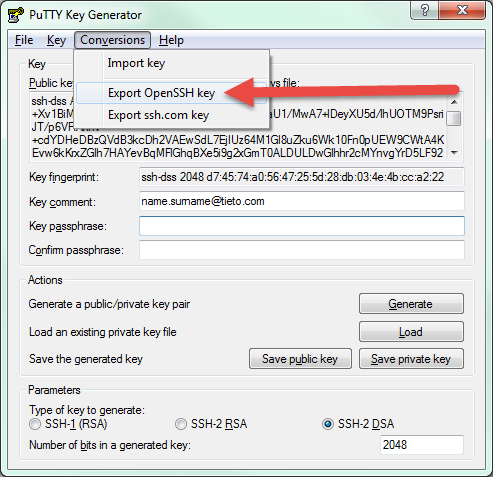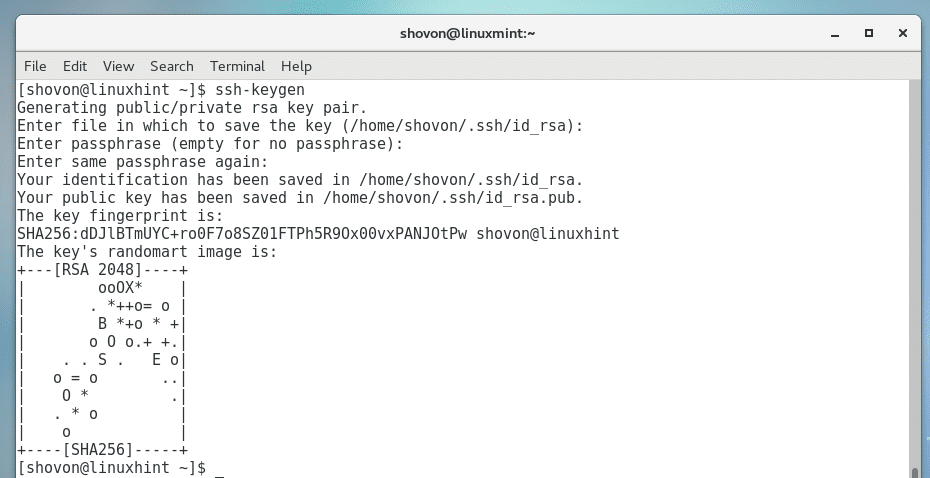
Ssh copy id manually password#
Then, enter the password of the user specified above to access the server. When connecting to the remote host for the first time, an alert message to inform you that your Client does not recognize the Server will be shown. NB Replace "user" with the username to access the Server and "remote_host" with, with the public IP of the Server (or the domain that points it). Of course, to do so, the login data to connect to the server are necessary. To use this tool, specify the remote host to send your public key to. These 3 methods are described in the following paragraphs. In case you don’t have it, the key can be still copied through direct access via SSH, or by manually copying the file on the server. The quickest way to send your public key to the Server is surely through ssh-copy-id, a simple but effective tool pre-installed on many operating systems.
Ssh copy id manually install#
Copy of the public key on the ServerĪt this point, install the public key on your server. Now, communicate the public key to the Server so that it can create the authentication system. id_rsa.pub: public key, easily distributable.Īt this point, you have the two keys.id_rsa: client's private key, not to be shared with anyone.If the key generation procedure was successful, the output shown will be similar to that in the following figure.Īt the end of this operation, ssh-keygen will save two files in the paths shown: If this is the case, be careful because the operation is irreversible and, when a file is overwritten, the old keys can no longer be recovered.Īfter choosing the path where to save your files, you will be requested to specify an optional passphrase , through which the security level for your keys can be increased. NB If a pair of keys has been previously generated, an alert message asking whether to overwrite the existing files may be received. In case of no particular need to save the keys elsewhere, confirm by pressing Enter, otherwise, simply type the new path for the id_rsa file. If a higher level of security is needed, 4096-bit RSA keys can be generated by adding the -b flag at the end of the command.Īfter pressing the Enter key, you will be requested where to save the key pair.

This type of key is secure enough for most users. Then, type the following command on your machine's terminal to create a 2048-bit RSA key pair: ssh-keygen The first thing to do is generate the key pair on the Client machine, assuming here the Client is your local PC. At the end of the guide, you will be able to authenticate on your server using encrypted keys, without entering the password every time.
Ssh copy id manually how to#
In this tutorial you will see how to set SSH keys on your Linux CentOS 8 server.

In this type of authentication, the client generates a private key and its public key, which is installed on the server machine, in order to authenticate the client. To better improve SSH security, it is advisable to configure a type of encrypted access based on the use of RSA keys, as an alternative to password-based login. Maybe not: I am unsure of the openssh implementation of Microsoft and the ACL management will probably prevent you from login in after the ssh key deployment if the ACLs (and their administrator_authorized_keys mechanism) is not correctly fixed.īTW: the microsoft documentation are pretty clear.The SSH service represents the main access point to your Cloud Server and, at the same time, one of the protocols that may be more subjected to attacks than others. You can also use a “bash” script to modify your %PATH% and add any flavor of third party bash you may have installed on the server (cygwin, msys, git-bash…).ġ/ try again ssh-copy-id :) BUT keep in mind that only ed25519 keys may ssh-keygen -t ed25519 may save your day. New-ItemProperty -Path "HKLM:\SOFTWARE\OpenSSH" -Name DefaultShell -Value "C:\Windows\System32\WindowsPowerShell\v1.0\powershell.exe" -PropertyType String -Force Microsoft documentation explains how to deploy ssh keys using Powershell on serverside.Ģ/ The shell provided by Microsoft can be configured adding a property in the registry: I presume you installed the Microsoft β-release of native openssh server?


 0 kommentar(er)
0 kommentar(er)
